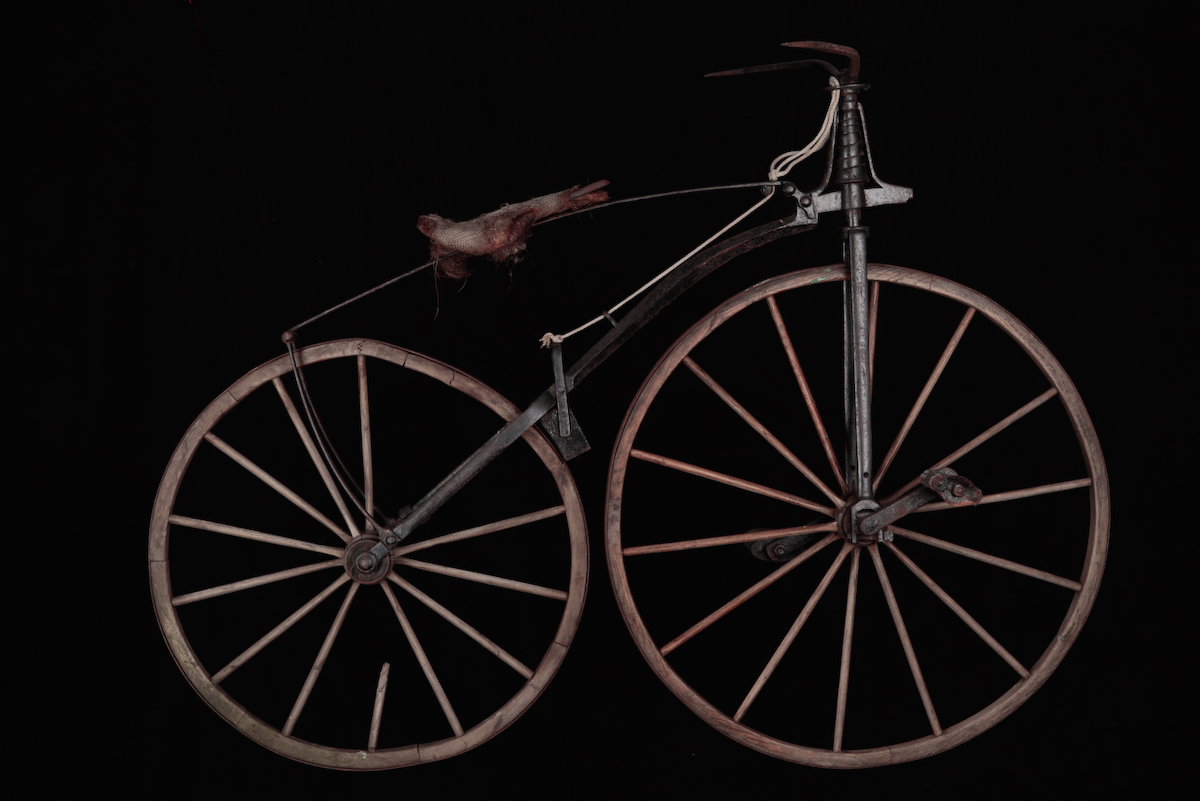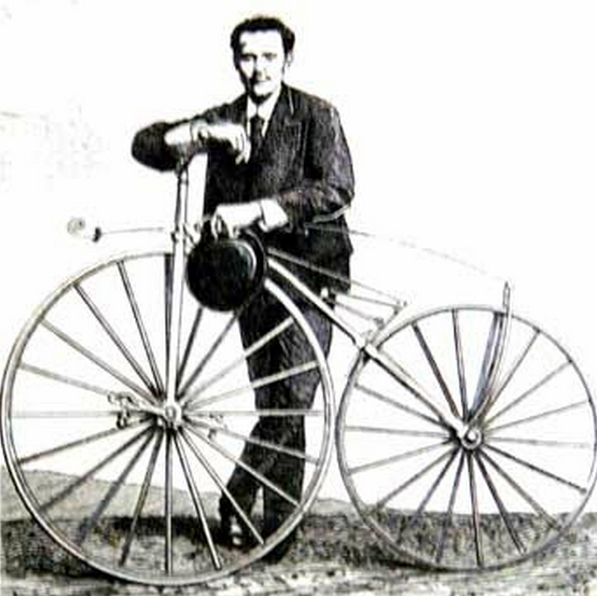Pierre Michaux on:
[Wikipedia]
[Google]
[Amazon]


 Pierre Michaux (June 25, 1813 – 1883) was a
Pierre Michaux (June 25, 1813 – 1883) was a
Michaudine
/ref> The design was based on the previous model, the only difference being that on the bicycles of the new company the serpentine


 Pierre Michaux (June 25, 1813 – 1883) was a
Pierre Michaux (June 25, 1813 – 1883) was a blacksmith
A blacksmith is a metalsmith who creates objects primarily from wrought iron or steel, but sometimes from other metals, by forging the metal, using tools to hammer, bend, and cut (cf. tinsmith). Blacksmiths produce objects such as gates, gr ...
who furnished parts for the carriage trade in Paris during the 1850s and 1860s. He may have become the inventor of the bicycle when he added pedals to a draisine
A draisine () is a light auxiliary rail vehicle, driven by service personnel, equipped to transport crew and material necessary for the maintenance of railway infrastructure.
The eponymous term is derived from the German inventor Baron Karl ...
to form the Michaudine velocipede
A velocipede () is a human-powered land vehicle with one or more wheels. The most common type of velocipede today is the bicycle.
The term was probably first coined by Karl von Drais in French as ''vélocipède'' for the French translation ...
, the forerunner of the modern bicycle. However, historic sources reveal other possible claimants, such as his son Ernest Michaux and Pierre Lallement.
History
Pierre Michaux was born at Bar le Duc and worked as a blacksmith who furnished parts for the carriage trade in Paris during the 1850s and 1860s. He started building bicycles with pedals in the early 1860s. He, or his son Ernest, may have been the inventor of this machine, by adapting cranks and pedals on the front wheel of a draisine. In 1868, he formed a partnership with the Olivier brothers under his own name, Michaux et Cie ("Michaux and company"), which was the first company to mass produce pedal-powered velocipedes, known as the Michaudine./ref> The design was based on the previous model, the only difference being that on the bicycles of the new company the serpentine
frame
A frame is often a structural system that supports other components of a physical construction and/or steel frame that limits the construction's extent.
Frame and FRAME may also refer to:
Physical objects
In building construction
*Framing (con ...
was made of two pieces of cast iron
Cast iron is a class of iron– carbon alloys with a carbon content more than 2%. Its usefulness derives from its relatively low melting temperature. The alloy constituents affect its color when fractured: white cast iron has carbide impur ...
bolted together, instead of wood, which made it more elegant and enabled mass-production
Mass production, also known as flow production or continuous production, is the production of substantial amounts of standardized products in a constant flow, including and especially on assembly lines. Together with job production and bat ...
. The wheels were made of wood and the tires made of iron, like those on horse-drawn carriages.
In 1865, a blacksmith from Lyon
Lyon,, ; Occitan language, Occitan: ''Lion'', hist. ''Lionés'' also spelled in English as Lyons, is the List of communes in France with over 20,000 inhabitants, third-largest city and Urban area (France), second-largest metropolitan area of F ...
named Gabert designed a variation on the frame which was of a single diagonal piece of wrought iron
Wrought iron is an iron alloy with a very low carbon content (less than 0.08%) in contrast to that of cast iron (2.1% to 4%). It is a semi-fused mass of iron with fibrous slag inclusions (up to 2% by weight), which give it a wood-like "grain" ...
and was much stronger—by that time Pierre Lallement had emigrated to America, where he filed the only patent for the pedal bicycle.
It soon became evident that the serpentine 45 kg cast-iron frames were not sturdy enough, and with competing manufacturers already producing bicycles with the diagonal frame, the Oliviers insisted that Michaux follow suit. The partnership was dissolved in 1869, and Michaux and his company faded into oblivion as the first bicycle craze
The bike boom or bicycle craze is any of several specific historic periods marked by increased bicycle enthusiasm, popularity, and sales.
Prominent examples include 1819 and 1868, as well as the decades of the 1890s and 1970sthe latter espec ...
came to an end in France and the USA. Only in England did the bicycle remain popular, and England was the site of all of the next major improvements to the machine.
Michaux is often given credit for the idea of attaching pedals to the draisine, and thus for the invention of the bicycle—however, bicycle historians have stated it could have been the concept of his son Ernest, or Pierre Lallement, a carriage builder from Nancy who worked with the Olivier brothers.
Michaux died in France.
See also
*Michaux-Perreaux steam velocipede
The Michaux-Perreaux steam velocipede was a steam powered velocipede made in France sometime from 1867 to 1871, when a small Louis-Guillaume Perreaux commercial steam engine was attached to a Pierre Michaux manufactured iron framed pedal bicycle ...
Notes
References
* The Bicycle: The Myth And the Passion de Francesco Baroni (Relié - avril 2008) {{DEFAULTSORT:Michaux, Pierre 1813 births 1883 deaths People from Bar-le-Duc French blacksmiths 19th-century French businesspeople